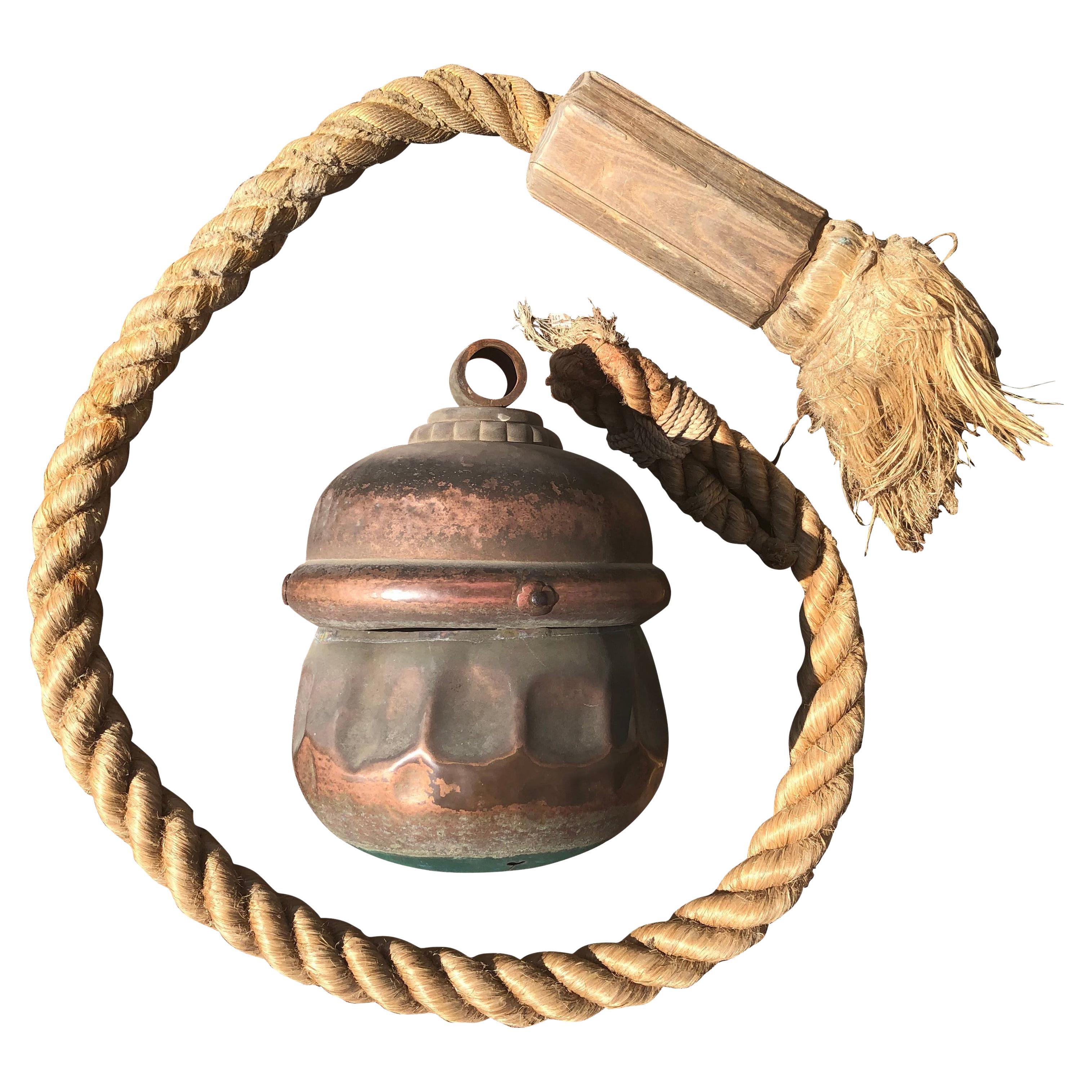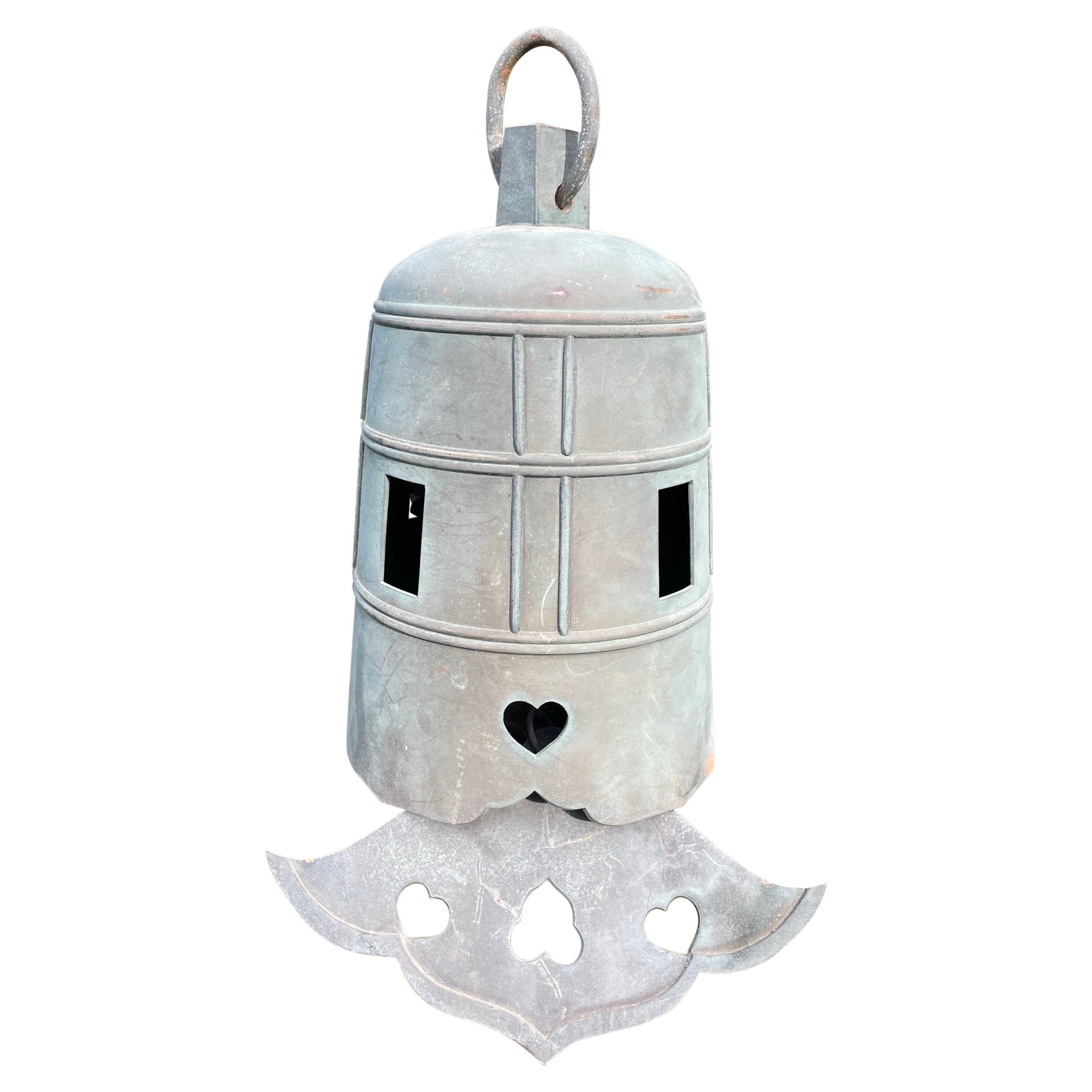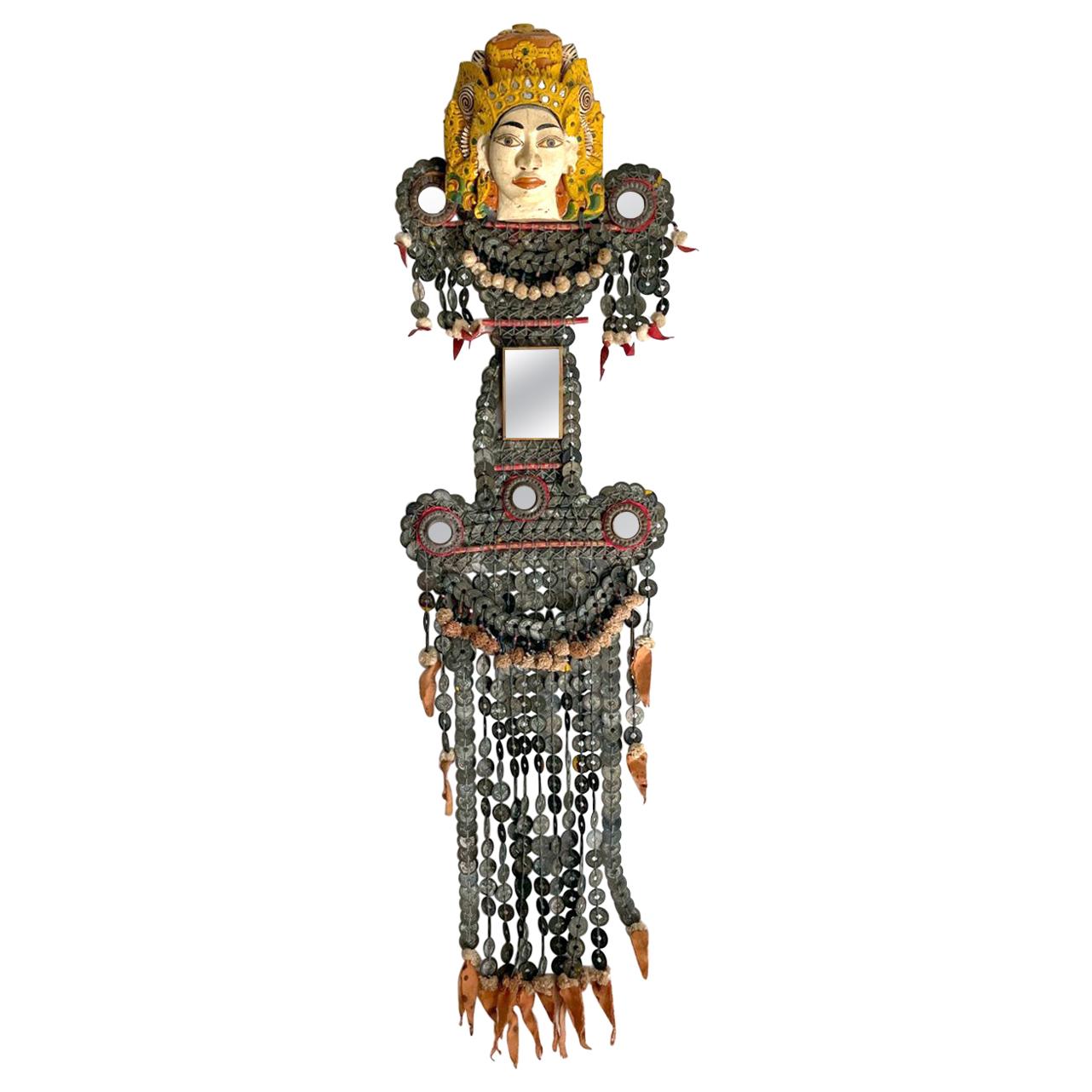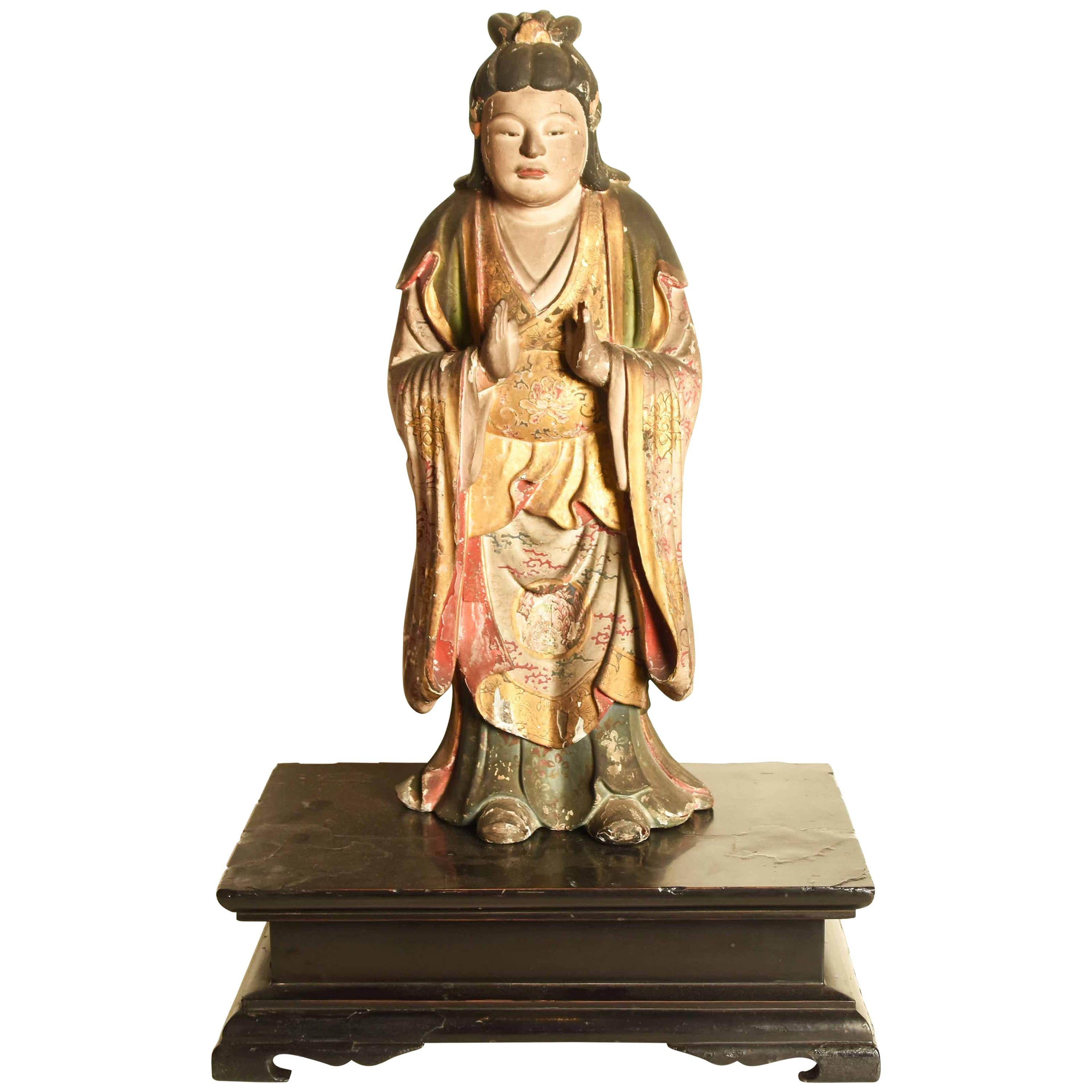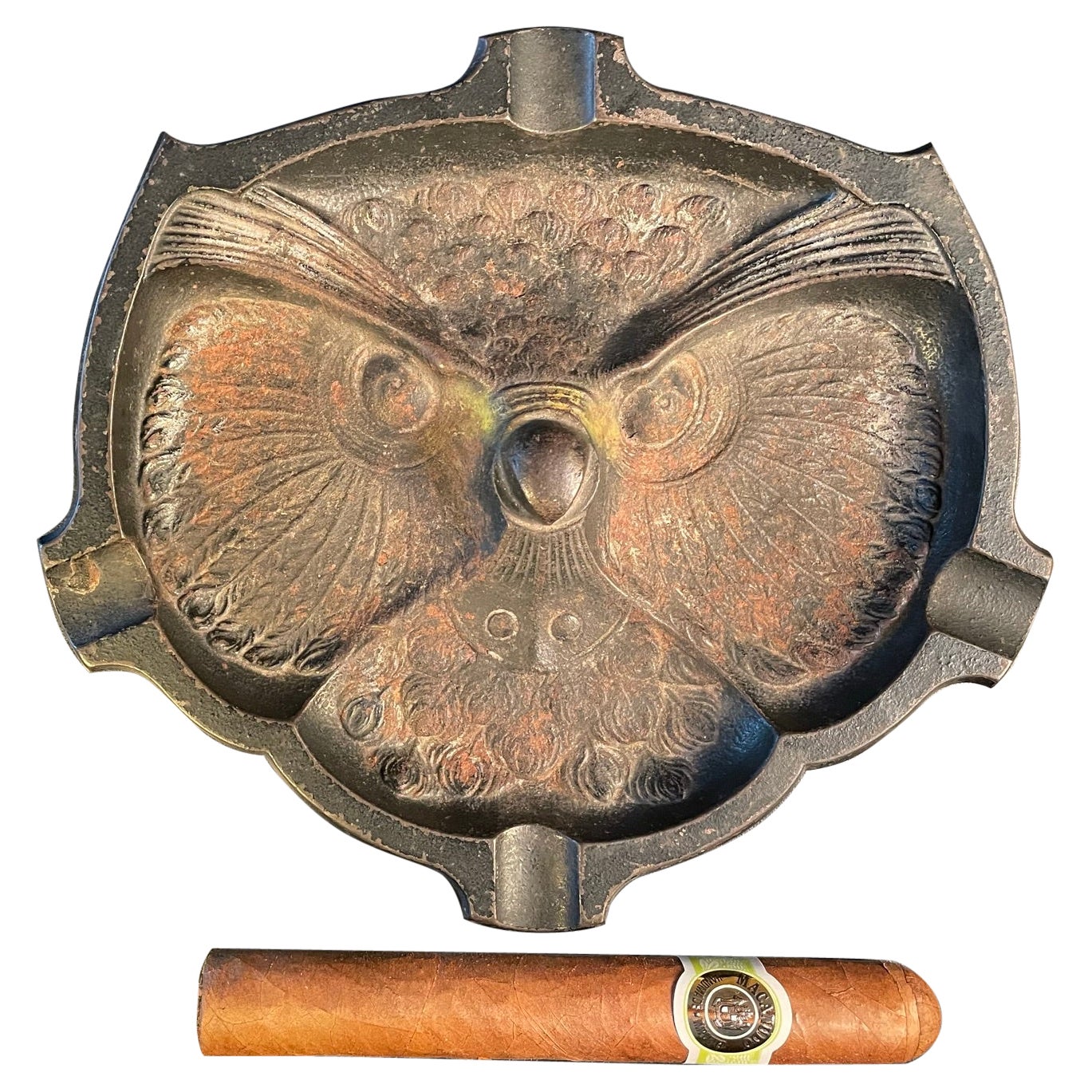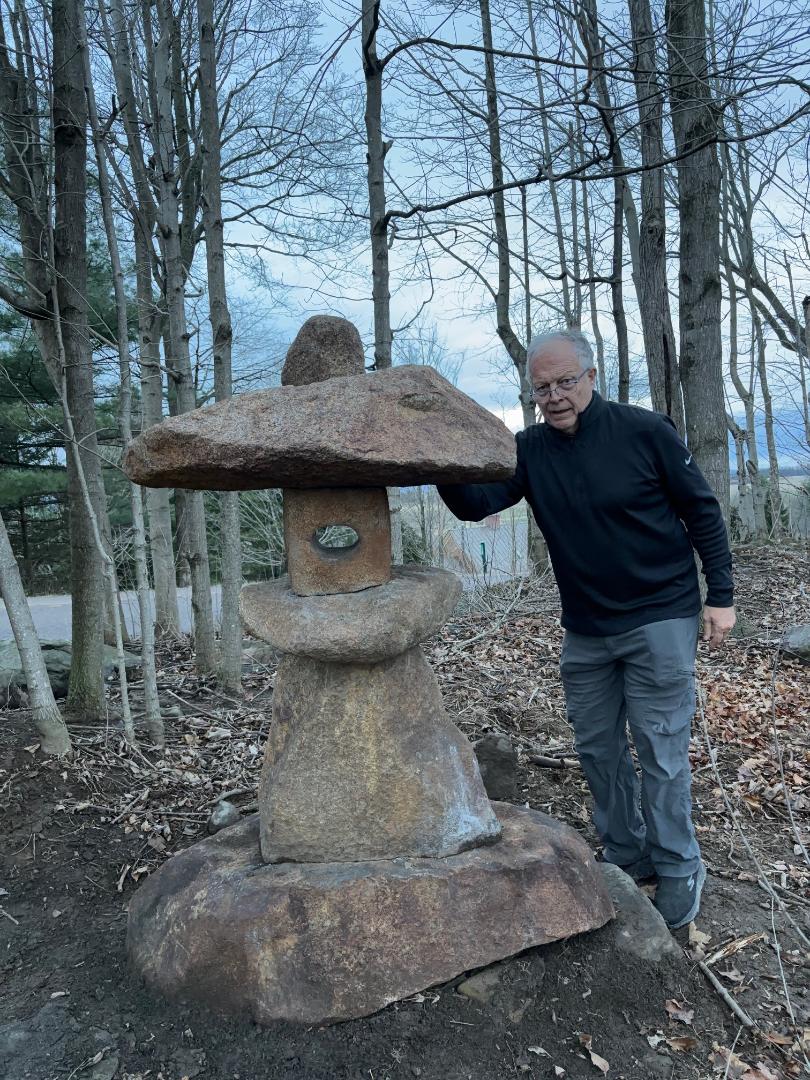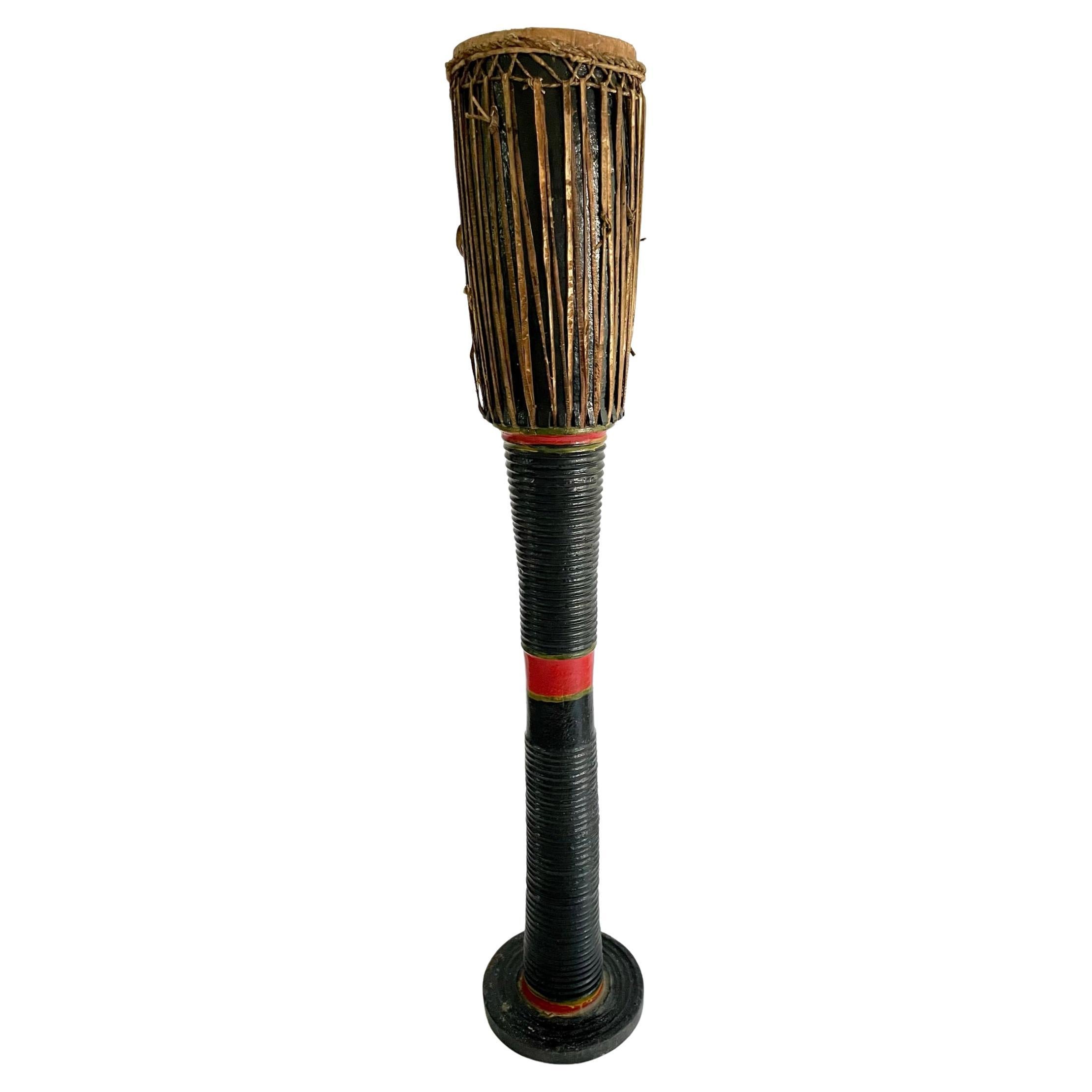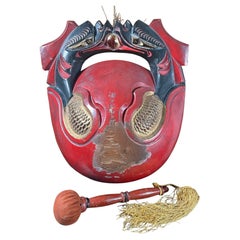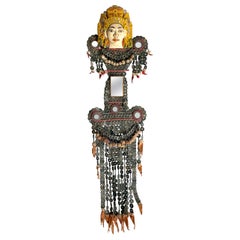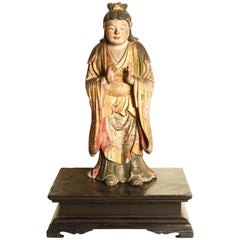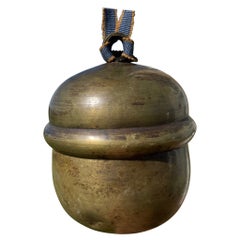
Japanese Antique Shinto Temple Spirit Bell
View Similar Items
Want more images or videos?
Request additional images or videos from the seller
1 of 16
Japanese Antique Shinto Temple Spirit Bell
About the Item
- Dimensions:Height: 15 in (38.1 cm)Diameter: 5 in (12.7 cm)
- Style:Taisho (Of the Period)
- Materials and Techniques:
- Place of Origin:
- Period:
- Date of Manufacture:1915
- Condition:Wear consistent with age and use.
- Seller Location:South Burlington, VT
- Reference Number:1stDibs: LU1289225203962
About the Seller
5.0
Gold Seller
These expertly vetted sellers are highly rated and consistently exceed customer expectations.
Established in 1990
1stDibs seller since 2015
2,217 sales on 1stDibs
Typical response time: 1 hour
More From This SellerView All
- Big Antique Japanese Zen Temple Chanting Bell Genuine Hand Carved MokuygoLocated in South Burlington, VTJapanese antique temple find from the Meiji period, 19th century A large hand carved hand lacquered, and hand gilded wooden chanting bell mok...Category
Antique 19th Century Japanese Meiji Sculptures and Carvings
MaterialsWood
- Japanese Huge 18 Inch Antique Temple Shinto Prayer Bell, Genuine Historical ItemLocated in South Burlington, VTHistorical Bell- Immediately Useable First ever to be offered A genuine temple used de-accession 96 inch prayer bell with original wooden handled rope from a shrine in Nakamura Ward, Nagoya, Japan An extraordinary opportunity to acquire, collect, use and display the largest scale 18” temple bell of this kind we have ever seen in private hands- including its original wood and hemp rope pull- a Japanese authentic hand cast copper Shinto Suzu bell. The auspicious temple shrine from which this bell comes, was founded in 1156 to honor Ojintenno, who was the 15th emperor of Japan. It was commissioned in part by Minamoto no Tametomo, who was a famous Samurai, who is known as possibly being the first samurai to commit Seppuku. Its big 18" high and 12" diameter bell including a massive hand carved wooden pull handle measuring 17 inches in length shows patina from great age, dates to the late 19th century, and was formerly rung outside a Nagoya Temple great hall where it was enjoyed by members of Japan's local Shinto communities. This bell was authentically rung at this temple shrine. We will include the original 96 inch rope pull with massive 17 inch long hand carved wooden handle. In total, this is an extraordinary copper bell which includes its rare original wood and hemp rope pull. Important: Please view the actual insitu photograph of this amazing relic before it was deaccessioned. This huge old bell dates to the late 19th century period, displays an impressive patina from age, and sounds impressive. It's lower half portion has been purposely hand-hammered by design to improve its sound- this is not damage. The Suzu Shinto bell...Category
Antique 1890s Japanese Meiji Sculptures and Carvings
MaterialsCopper
$1,440 Sale Price40% Off - Japanese Big Antique Bronze Temple Bell with Resonating Sound, Signed 21 InchesLocated in South Burlington, VTFor your special garden setting or indoor display space. Big Hand Cast Bronze Bell Bold pleasing, and resonating sound. 21 Inches Tall. Dated Taisho 15= 1926 , December 12 Signed for patron donors at Imari Ikishima Donors include: Fukui Sano and Fukui shie, Tomiyama kazuki,and Nichimao . Handsome original old green patina- just the way we like to find them. Signed by patron donors in two areas. Beautiful deep resonating ring tones await the new owner of this big one-of-a-kind vintage bronze bell from old Japan. Its beautiful natural patina makes it an attractive and desirable work of art. This distinctive dragon headed bell called ryuzu and remarkable protrusions called chi chi or nyu are crafted by generations old skilled Japanese specialists to improve sound resonance and are unique to Japan's ancient traditions. This antique hand cast bronze temple bell dates to the Taisho period, early 20th century. A scarce survivor, this rugged bell was gently used. Please note its impressive cast dragon headed top ryuzu, thick walls and original dark patina. Dimensions: 21 inches tall and 11 inches diameter. It has been used and possesses an original green aged patina appropriate to its age. Its deep resonating sound is guaranteed to please you. About Bonsho Bells "Voice of Buddha" The earliest bells date to around 600 AD, although the general design is of much earlier Chinese origin and shares some of the features seen in ancient Chinese bells. Their penetrating and pervasive tone carries over considerable distances. The sound of the bell is thought to have supernatural properties. It is believed, for example, that it can be heard in the underworld. In Japanese ceremonies, hanging bells are used for signaling during the prayer and for calling Buddhists to worship. In China, similar bells were employed in ensembles, where they represented the yin, or "receptive" principle, and were sounded after the beat of a large drum (yang, or "creative" element). The Japanese bonsho...Category
Early 20th Century Japanese Taisho Sculptures and Carvings
MaterialsBronze
- Japanese Rare Large Antique Bronze Temple "Futuku" Bell Complete Original ChimeLocated in South Burlington, VTRare large Japanese bronze temple "Futaku" bell with original and complete hanging bronze cloud clapper , from Kyoto Temple. One of only two we have seen This bell is a rare treasu...Category
Early 20th Century Japanese Meiji Sculptures and Carvings
MaterialsBronze
$1,460 Sale Price63% Off - Japanese Unique Old Owl Face Cigar Stogie TrayLocated in South Burlington, VTEven if you dont smoke cigars- delightful to display Japanese Unique Old Owl Face Cigar Stogie Tray This handsome Japanese quality over sized iron "Owl" faced cigar tray...Category
Early 20th Century Japanese Taisho Sculptures and Carvings
MaterialsIron
- Japanese Rare Antique Red Kurama Stone Spirit Lantern, One-of-a-KindLocated in South Burlington, VTBest In Class From our recent Japanese acquisitions travels. This unusual hard to find old Japanese red kurama stone lantern is known as an Obakedouro "Spirit lantern...Category
Early 20th Century Japanese Taisho Garden Ornaments
MaterialsStone
You May Also Like
- Japanese Momoyama Carved Wooden Shinto Temple Lion Dog FiguresLocated in New York, NYJapanese Momoyama period carved wooden Shinto temple entry figures in the form of royal lion dogs seated in traditional pose. The pieces have had some co...Category
Antique 17th Century Japanese Edo Sculptures and Carvings
MaterialsWood
- Rare Large Antique Balinese Temple Hanging Lamak, IndonesiaLocated in Atlanta, GAAn extraordinary "Kepeng Lamak" from Bali, Indonesia, circa early 20th century. Lamak is a general term for temple hangings, mostly made of disposable materials like palm leaves for temporary offerings. A small number, such as this piece, were made by wealthy and aristocratic families for permanent display. The lamaks are traditionally displayed in temples or residents for a strong spiritual reason in Bali that is known as "Artja". They could function as receptacles, or a vessels of for the habitation of the deities when they descent to the earth on propitious occasions. In a goddess form with a carved wood head adorned with painted face and mirrored crown who likely represents Dewi Danu, the water goddess, this lamak was constructed with a bamboo frame, cotton pompoms, fabric fragments...Category
Early 20th Century Indonesian Other Sculptures and Carvings
MaterialsCopper
- Antique Japanese Gilded Statue of a Shinto God, Momoyama PeriodLocated in Prahran, VictoriaA Japanese statue of a Shinto god from the Momoyama period. Hand carved from wood with a layer of gesso and hand painted flowing robes with delicately wroug...Category
Antique 16th Century Japanese Sculptures and Carvings
MaterialsGesso, Wood
- Early 20th Century Thai Temple DrumLocated in Atlanta, GAThis elegantly carved temple drum wase use in Buddhist Temples. It’s carved from teak and lacquered black with red and green stripped details. The top and straps are made of leather. These gigantic goblet...Category
Early 20th Century Thai Sculptures and Carvings
MaterialsLeather, Teak, Lacquer
- Japanese Antique Gilt Wood Amitabha Buddha on Loctus Throne StatueLocated in Atlanta, GAA Japanese carved wood Amitabha (Amida) Buddha statue with residual gold leafed surface circa 19th century (late Edo period). The buddha is seated in the padmasana position on an elevated double lotus throne, under a small lotus halo canopy. His right hand is held in abhaya mudra which means fearlessness in Sanskrit. The mudra symbolizes protection, peace, and fearless. His left hand gently resting on his thigh. Dressed in a flowing robe with open chest, the statue showcases a classic iconography found prominently in Japanese Buddhism art during Edo to Meiji period, characterized by the double lotus throne and a particularly serene meditative facial expression, highlighted by inset gemstones...Category
Antique 19th Century Japanese Edo Sculptures and Carvings
MaterialsGold Leaf
- Togatta Japanese Wooden Traditional Kokeshi DollLocated in Barcelona, BarcelonaJapanese doll called Kokeshi of the early 20th century. Provenance from the northern Japan. Dolls shapes and patterns are particular to a certain area and are classified under elev...Category
Early 20th Century Japanese Edo Sculptures and Carvings
MaterialsWood
Recently Viewed
View AllMore Ways To Browse
Japanese Large Bell
Antique Copper Bells
Antique Copper Bell
Buddhist Shrine
Antique Asian Bells
Japanese Antique Shrines
Antique Call Bell
Antique Bell American
Bronze Bell Japan
Antique Japanese Bells
Antique Japanese Bell
Asian Temple Bell
Japanese Bronze Bell
Bronze Temple Bell
Japanese Temple Bell
Antique Temple Bell
Hollow Ring
Antique Japanese Bronze Bell

